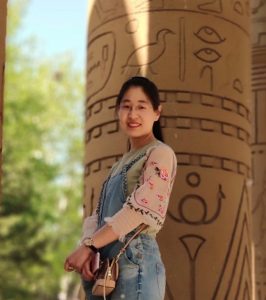Lijuan Qi: The Plant Cell First Author

 Lijuan Qi, co-first author of “Mutual upregulation of HY5 and TZP in mediating phytochrome A signaling”
Lijuan Qi, co-first author of “Mutual upregulation of HY5 and TZP in mediating phytochrome A signaling”
Current Position: Postdoc, China Agricultural University
Education: B.Sc.(Ag.) (2015) from Hebei Agricultural University; Ph.D. (2020) from China Agricultural University
Non-scientific Interests: Reading, Watching movies
Brief bio: Although my undergraduate major in Hebei Agricultural University was Seed Science and Engineering, I have had a strong interest in plant molecular biology. After completing my undergraduate study, I was fortunate to have the opportunity to join Prof. Jigang Li’s lab at China Agricultural University as a Ph.D. student. My Ph.D. work elucidated that the PIF transcription factors specifically regulate ABA signaling in darkness by interacting with the ABA receptors PYL8 and PYL9 to control ABI5 expression. That work was published in 2020 by Molecular Plant (13: 414–430). Prof. Li’s lab is very interested in phyA signaling and shade avoidance response, and I have also been working on a project aiming at elucidating the action mechanisms of TZP, a key component of phyA signaling recently identified by our lab. In collaboration with Dr. Cong Li, we demonstrated that TZP and HY5 mutually upregulate each other by distinct mechanisms in mediating phyA signaling. In addition to their interdependent functions, our data showed that HY5 and TZP also play independent roles under high fluence rates of FR light. Our study demonstrates that TZP works in close concert with the central components of the phyA signaling pathway, including HY5, COP1 and the phyA photoreceptor itself, playing a key role in phyA signaling networks.
姓名:齐立娟
目前职位:中国农业大学博士后
教育经历:2015年获得河北农业大学学士学位;2020年获得中国农业大学博士学位
兴趣爱好:阅读,看电影
个人简介:
尽管我本科在河北农业大学读的是种子科学与工程专业,我却对植物分子生物学有着浓厚的兴趣。2015年本科毕业后,我很幸运地获得了在中国农业大学生物学院李继刚教授课题组攻读博士学位的机会。我在博士期间的研究发现,转录因子PIFs通过与ABA受体PYL8和PYL9相互作用,共同调控ABI5基因的表达,从而在黑暗下特异调控植物的ABA信号途径。该研究论文在2020年发表于Molecular Plant (13: 414–430) 杂志。李老师实验室开展了多项关于phyA信号途径和避荫反应分子调控机制的研究,并在近年鉴定到一个参与远红光信号传递的新组分TZP。我和李聪博士合作,阐明TZP和HY5相互促进、协同调控植物远红光信号转导的分子机制。除了彼此依赖的调控关系外,TZP和HY5在高光强远红光下还具有相对独立的调控功能。这项研究揭示了TZP整合进phyA信号调控网络的分子机制,表明TZP与phyA信号途径的核心调控因子 (包括HY5, COP1以及phyA自身) 紧密配合,最终使植物对环境中的远红光信号做出精确的响应。



